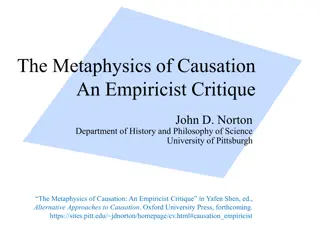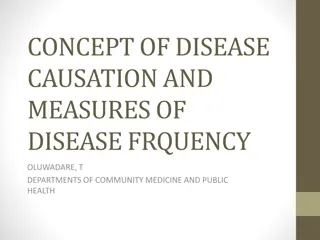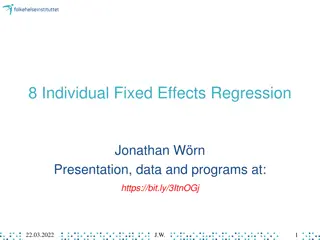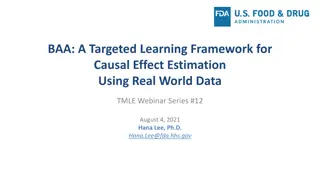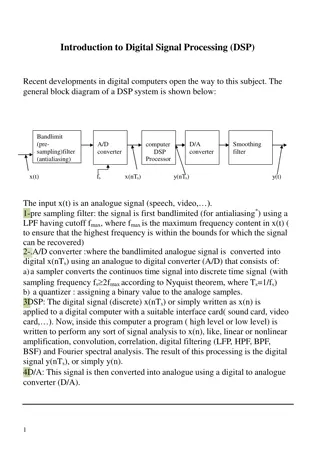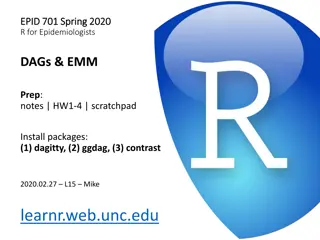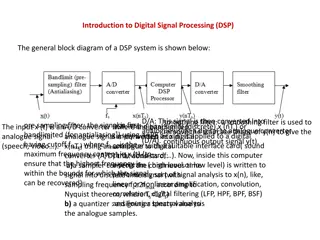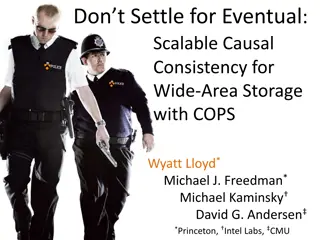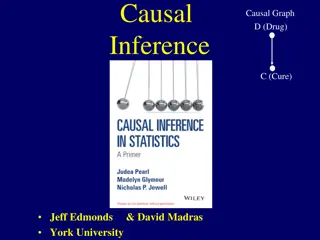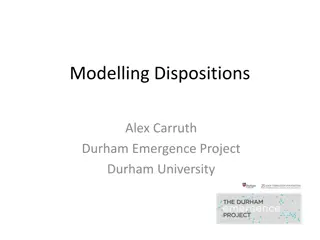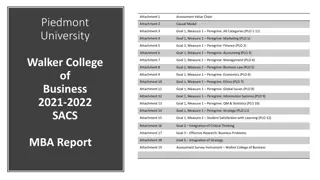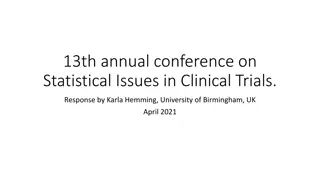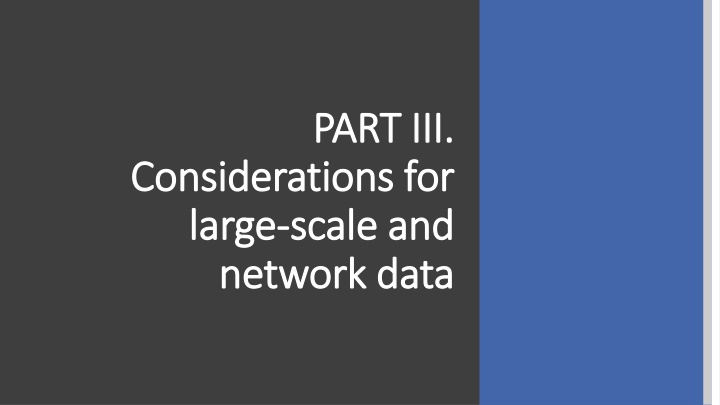
Effective Strategies for Handling High-Dimensional Data in Large-Scale Networks
Explore considerations for managing high-dimensional data in large-scale network settings, including challenges, solutions, and the impact of network effects on data analysis. Learn about dimensionality reduction, propensity score estimation, language model comparisons, and dealing with interference in network effects.
Download Presentation

Please find below an Image/Link to download the presentation.
The content on the website is provided AS IS for your information and personal use only. It may not be sold, licensed, or shared on other websites without obtaining consent from the author. If you encounter any issues during the download, it is possible that the publisher has removed the file from their server.
You are allowed to download the files provided on this website for personal or commercial use, subject to the condition that they are used lawfully. All files are the property of their respective owners.
The content on the website is provided AS IS for your information and personal use only. It may not be sold, licensed, or shared on other websites without obtaining consent from the author.
E N D
Presentation Transcript
PART III. PART III. Considerations for Considerations for large large- -scale scale and network network data and data
PART III. PART III. Special High-dimensional data considerations with large-scale and network Network Effects Data about People data
High-dimensional data creates estimation problems High-dimensional data is often sparse. E.g., Text: Distributed over all possible words E.g., Medical: Not all tests given to every patient Common statistical problem, reduces overlap (no two units are identical). Consider dimensionality reduction techniques such as PCA. Use regularized models for estimating propensity or regression. Transform input space to obtain more overlap.
Example: Regularized propensity score What is the effect of the Facebook news feed? Counterfactual: Would a user have shared a URL had they not exposed to it using the Feed? Over 3700 co-variates for matching. Use logistic regression with L2 regularization. Eckles and Bakshy. Bias and high-dimensional adjustment in observational studies of peer effects.
Paradox of measuring text with changing post frequency Q: Should we use word counts or word probabilities when comparing text messages from two different groups? If group A posts more frequently than group B then, any word ? is used more frequently by A than by B. Counts biased. at the same time, ??(?) < ??? . Likelihoods biased too. Language models are hard to compare when vocabularies differ Challenge: how to model and compare out-of-vocabulary likelihoods Mitigations: Some heuristics for smoothing language models, but require tuning of OOV mass Use language model over a fixed vocabulary (ignoring OOV)
PART III. PART III. Special High-dimensional data considerations with large-scale and network Network Effects Data about People data
Interference due to network effects Network effects complicate causal inference. If a person is exposed to some information, she might share with her friends. Due to the exposure, her friends outcome may also change. Breaks the SUTVA assumption: an individual s outcome should not depend on another s treatment status. Consider partitioned sub-networks as a unit of analysis. Design alternative randomization assignment or estimator. 7
Example: Identifying peer effects with observational studies is impossible(!) Consider the problem of separating peer influence from homophily. Observed data: Activity of person ? at time t is the same as activity of their friend ? at time t-1. Problem: Unobserved traits led to their friendship and also to the above common activity. Without knowing all relevant latent traits, causal identification is impossible. Shalizi and Thomas. Homophily and Contagion Are Generically Confounded in Observational Social Network Studies.
Example: Use aggregated sub-networks Question: Do peers influence us to exercise? Instead of individuals, consider all users in a city as a unit. Use rainfall to construct a natural experiment on running and do checks to validate IV assumptions to the extent possible. Aral and Nicolaides. Exercise contagion in a global social network. Nature communications 2017.
PART III. PART III. Special High-dimensional data considerations with large-scale and network Network Effects Data about People data
Everything depends on context Estimated effect is often context-dependent May not generalize to other users May not generalize to other platforms May not generalize to other cultures The WEIRD problem of social science studies. 1. Corroborate findings with multiple platforms or user samples. 2. Be explicit about plausible (non)-generalizability of causal effect.
Common confounders that lead to selection bias Structured Unstructured Demographics (e.g., gender, age, income) Activity (e.g., post content, images) Patterns of usage(e.g., number of logins, type of activity) Preferences (e.g., items interacted with)
Demographic Bias Online activity varies by demographics such as Age and Gender. Search engines, recommendation feeds are measured on metrics such as Time spent on referred page . Without controlling for Age, metric is not trustworthy. Age Search Result Time spent on page Mehrotra et al. Auditing Search Engines for Differential Satisfaction Across Demographics, WWW 2017.
Usage Bias More activity can simply mean that people are online at the time, not due to any specific treatment. People browse more ad- related products when they are shown an ad. But they also browse more of everything! Online activity Ad Ad-related page view exposure Lewis, Rao and Reily. Here, There, and Everywhere: Correlated Online Behaviors Can Lead to Overestimates of the Effects of Advertising. WWW 2011.
Activity Bias Treated and untreated people may differ in many aspects. People with demonstrably different activity content should not be compared. User Activity Match people with similar activity content that is relevant to chances of being treated. Event Outcome Olteanu, Varol and Kiciman. Distilling the Outcomes of Personal Experiences: A Propensity-scored Analysis of Social Media. CSCW 2017.
Preference Bias Any similarity in activity may be due to inherent preferences, not any specific treatment. Social influence from friends feeds is most likely over-estimated because similarity in actions can be homophily. Vast majority of people s behavior can be predicted by their past actions. Sharma and Cosley. Distinguishing between Personal Preferences and Social Influence in Online Activity Feeds. CSCW 2015. Homophily Friends feed Similarity with Friends
PART I. Introduction to Counterfactual Reasoning PART I. Introduction to Counterfactual Reasoning PART II. Methods for Causal Inference PART II. Methods for Causal Inference PART III. Large PART III. Large- -scale and Network Data scale and Network Data PART IV. Broader Landscape PART IV. Broader Landscape

